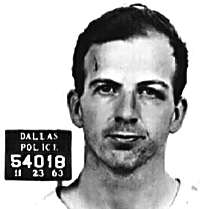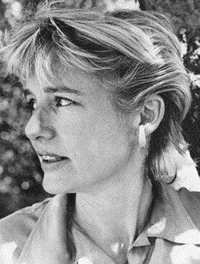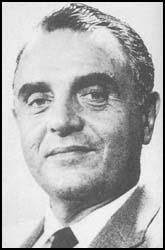 New evidence and analysis suggest that the KGB was behind the 1963 assassination of President John F. Kennedy.
New evidence and analysis suggest that the KGB was behind the 1963 assassination of President John F. Kennedy.
Some observers have always considered the Soviets a likely suspect. Lyndon Johnson evidently did. According to the House Select Committee on Assassinations’ chief counsel, Robert Blakey, after the assassination the Soviets went on nuclear alert. Johnson assured the Soviets that the US had no evidence of Soviet involvement and planned no reprisals.1 He also ordered the suppression of any hint of a KGB conspiracy for fear that an outraged public would demand retaliation that would lead to war.2 The Soviets had a palpable, powerful motive for assassinating Kennedy: to gain revenge for the humiliation of Khrushchev and the USSR in the 1962 Cuban missile crisis. The assassination also removed a popular young president and demoralized many Americans, while the cover-up alienated them from their government and media.
Certainly, the idiosyncratic odyssey of Lee Harvey Oswald into the Soviet Union and a Russian marriage as well as his contacts with Soviet diplomatic offices preceding the assassination afforded the KGB many opportunities to interact with him. Thus the KGB is the elephant in the living room of suspects in this case. Yet repeated investigations have failed to turn up specific evidence that would implicate the KGB.
The Mary Meyer Story
Now a new report (“Did the KGB Murder President Kennedy’s Girlfriend?”) explains how the KGB used a contract killer to murder Mary Pinchot Meyer, a JFK consort during his White House years, on the Canal towpath near Georgetown. Her murder is linked to JFK’s.
Three aspects of the Meyer case deserve consideration.
First, the KGB must have had a compelling reason to murder Mary Pinchot Meyer. Otherwise, it is hard to see why they would have taken the risk of exposure. The most plausible motive would have been to get revenge against Meyer for misleading Khrushchev and the KGB about Kennedy (she was acting as a behind-the-scenes intermediary between Kennedy and Khrushchev, with an apparent personal agenda of promoting peace via marijuana- and LSD-induced softening of American and Soviet leaders).3
According to Ion Mihai Pacepa, at the time deputy director of foreign intelligence for Gheorghe-Dej’s Romania, in his book Programmed to Kill: Lee Harvey Oswald, the Soviet KGB, and the Kennedy Assassination4, Dej was visiting Moscow at the time of the Cuban Missile Crisis. Pacepa writes:
“According to Dej’s account, when Khrushchev finished reading that cable [from the KGB in Washington saying that Kennedy had ordered a naval quarantine of Cuba], his face was purple. He looked inquiringly at [KGB chief] Semichastny, and, when the terrified general nodded, Khrushchev ‘cursed like a bargeman’. Then he threw Semichastny’s cable on the floor and ground his heel into it. ‘That’s how I’m going to crush that viper,’ he cried. The ‘viper,’ Dej explained in telling the story, was Kennedy.
Goading himself on, Khrushchev grew increasingly hysterical, uttering violent threats against the ‘millionaire’s whore’ and his CIA masters.”
Dej interpreted ‘that viper’ and the ‘millionaire’s whore’ as references to Kennedy, but viper (gadyuka) is feminine in Russian and a common epithet for a malicious, treacherous woman. Moreover, Kennedy was a millionaire himself and of the wrong gender, and he did not have CIA masters. A far better interpretation is that Khrushchev was referring to Mary Meyer. In turn, this suggests that Meyer’s peace rhetoric and her talk about the purported use of drugs by American leaders had emboldened Khrushchev to undertake his breathtakingly reckless Cuban missile adventure, which ultimately led to a deeply embarrassing withdrawal. However, the close fit with Meyer did not mean that Khrushchev was not after Kennedy; rather, it showed that he was eager for vengeance, and that would clearly include Kennedy as well.
Second, Meyer’s murder occurred not several years before or after the JFK assassination, but 11 months after—enough time for it not to seem too closely connected, but not any more time than that.
Third, the divorced husband of Meyer was senior CIA official Cord Meyer. When questioned by a reporter as he neared death in 2001, he said that his ex-wife was murdered by “[t]he same sons of bitches that killed John F. Kennedy.”5 This statement has been taken to refer to the CIA, but that makes no sense. There is no good reason to think that CIA was involved in the murder of Kennedy, despite strained efforts by some observers (and Soviet disinformation) to suggest otherwise. Nor is there any valid reason to think that the CIA wanted to murder Mary Pinchot Meyer, who was a long-standing friend of Agency officials. (This has not stopped some from suggesting that CIA murdered her to cover up its assassination of Kennedy.6) Lastly, Cord Meyer is not likely to have referred to his ex-colleagues in those terms, and he himself was serving in CIA during the assassination of Kennedy.
But, if one assumes that CIA knew that the KGB had murdered Mary Pinchot Meyer, then Cord Meyer’s remark takes on a very different meaning. It is a statement by a former senior CIA official that he, and presumably the Agency in general, had concluded that the KGB was behind the murder of John F. Kennedy.
The KGB’s Favorite U.S. Marine
The Soviets repeatedly denied that the KGB had had any contact with Lee Harvey Oswald, and at first they were suspicious of him. But as a Marine radar specialist in Japan and California, Oswald had access to extensive classified information regarding radars, flight patterns, and in particular the new height-finding radar that would have been of exceptional interest to the KGB in regard to the U-2 spy flights. Oswald told US Embassy officials in Moscow that he intended to reveal sensitive information to the Soviets. Gary Powers, pilot of the U-2 flight downed in May, 1960, suggested that Oswald betrayed to the Soviets information that they used to shoot down the U-2.7 This seems very believable, and it would mean that Oswald had proved himself a loyal communist and one who had provided precious information to the USSR. So the KGB came to trust him.
Given Oswald’s aggressive mentality and track record (well known to the KGB), it would have required very little for the KGB, without specifically stating its/Khrushchev’s wish, to insert into his mind the suggestion that he assassinate an American president. Virulent communist hate propaganda during Oswald’s years in the Soviet Union might have instilled in his impressionable brain the need to take action, as the occasion presented itself, against those like the American president who thwarted the progress of communism.
According to Pacepa, there are reasons to think that, under cover of a civilian life in Minsk, Oswald received KGB training in clandestine techniques for serving as an operative if and when he returned to the United States. The KGB provided Oswald his wife Marina according to a standard technique to bind a foreign agent to the USSR.
Defector Yurii Nosenko’s denial of KGB interest in Oswald, Pacepa points out, was incorrect because Nosenko was in the domestic division of the KGB and was not aware of the interest of the foreign branch (PGU) in him. This explanation trumps standard Lone Gunman accounts by authors who have convincingly debunked many conspiracy theories but have themselves mistakenly followed Nosenko.8 Pacepa also argues that, even though the Soviets originally may have had the intention of assassinating Kennedy, in 1962 the KGB ordered its agents worldwide to cease assassination activities because Khrushchev’s reputation had been badly tarnished as an orderer of assassinations in a West German criminal case. Failing to receive a go-ahead from the KGB, Oswald went rogue. He purchased a rifle on his own, against KGB practice, and pursued his own plan to assassinate Kennedy. The KGB was alarmed enough to move Oswald’s handler (George de Mohrenschildt) out of Dallas in April, 1963 and into sequestration in Haiti. But the Soviets, now with the added motive of avenging the humiliation of the Cuban Missile Crisis, evidently decided not to stop Oswald or warn the Americans.
Therefore, following the incisive account of General Pacepa, the most senior Soviet Bloc intelligence officer to defect during the Cold War, the answer to the question of whether the Soviets ordered Oswald to assassinate Kennedy appears to be No. But they provided the ugly, suggestive propaganda that led Oswald to hate Kennedy; they trained him as an operative, including with rifle practice;9 they provided him a masterful KGB handler (de Mohrenschildt); they failed to do whatever necessary to cause him to desist; and they deliberately neglected to warn the Americans of a likely upcoming assassination attempt. The KGB also appears to have ordered Cuban intelligence asset Jack Ruby to murder Oswald in the event that he succeeded in assassinating Kennedy, Pacepa argues; and (Pacepa also suggests) the KGB killed Ruby himself with radioactive poison at the time when he was scheduled for retrial and would become available to talk with reporters.
The contract murder of Mary Meyer would make a third KGB-arranged killing that fit into the pattern of doing away with problematical individuals connected with Kennedy and/or his assassination.
Thus, even though Oswald ultimately acted on his own, the KGB was deeply involved in the assassination of John F. Kennedy and must share the blame for it, as must Khrushchev.
Still, we have to account for the presence of the Mafia around the assassination, as well as for the high number of suspicious deaths of those involved. Oswald may have received a suggestion that someone should remove Kennedy indirectly from Nikita Khrushchev, whom Oswald held in great respect and termed “simply brilliant”. When the exposure in a West German court as an orderer of assassinations led Khrushchev to halt murders in 1962, Oswald pushed on, perhaps assuming that Soviet bureaucrats were blocking Khrushchev’s true desire to eliminate Kennedy.
Oswald appears to have persuaded his uncle, Charles Murret, to induce his boss, New Orleans Mafia kingpin Carlos Marcello, to provide a professional sniper. Marcello held a powerful grudge against the Kennedys for publicly humiliating him by roughly deporting him to Guatemala. Marcello and other organized crime leaders were also threatened by Attorney General Robert F. Kennedy’s crusade against them; killing his older brother would neutralize RFK. With KGB training, Oswald himself had become an excellent shot; but he was shooting from a bad angle and far to the rear. The Mafia’s professional sniper on the nearby grassy knoll fired the killing shot from the front, knocking off a chunk of Kennedy’s skull and pieces of his brain. Thus Oswald, who planned the shooting and likely participated in it, could plead in court that he was the patsy. In fact, Oswald told journalists after the assassination “I’m just a patsy.”10
Meanwhile, Oswald’s deliberately misleading dealings with anti-Castro and pro-Castro Cubans, FBI, and CIA-connected individuals caused further confusion. So did the destruction of evidence and stonewalling by U.S. Government agencies covering up their mistakes after the assassination as well as by the Kennedy family seeking to protect JFK’s reputation.
So the KGB was involved with both gunmen: Oswald was a KGB-recruited and trained asset who turned rogue and served as the patsy, while Oswald himself arranged for the Mafia sniper. Thus this is a KGB-Mafia theory of the case, with a KGB rogue dealing directly with the Mafia, and the KGB itself working in the background even after breaking off contact with Oswald. It spread rumors, activated a well-prepared Second Oswald imposter, and ordered Jack Ruby to murder Oswald to shut him up after the assassination of JFK. The roles of Meyer and de Mohrenschildt (whom Pacepa persuasively identifies as Oswald’s KGB handler11) powerfully support this KGB rogue/ghost KGB interpretation. Many researchers have mistakenly labeled de Mohrenschildt a CIA asset, but his assiduous consorting with CIA was clearly his cover and a means of spreading disinformation.
(whom Pacepa persuasively identifies as Oswald’s KGB handler11) powerfully support this KGB rogue/ghost KGB interpretation. Many researchers have mistakenly labeled de Mohrenschildt a CIA asset, but his assiduous consorting with CIA was clearly his cover and a means of spreading disinformation.
Adding the Mary Meyer story and the Mafia role to Pacepa’s telling account gives us an explanation of the JFK assassination that contains both the idiosyncrasies of Oswald and the deceptive maneuvering of a KGB engaged in its specialty of deniable murder, with a fistful of motives including exacting revenge for the humiliation of the Cuban Missile Crisis. The Kennedy assassination and related murders can be seen as an integral episode of a Cold War that America waged against a ruthless enemy.
*****
The KGB Theory of American Assassinations argues that the KGB also arranged the murders of Martin Luther King, Robert F. Kennedy, Marilyn Monroe, and others.
Kenneth J. Dillon is an historian and former State Department intelligence analyst who writes on science, medicine, and history. See the biosketch at About Us and his novel Rosemarie. The John F. Kennedy assassination resembles the anthrax mailings case of 2001 in that researchers too readily accepted mistaken objections to elephants-in-the-living-room (the KGB and al Qaeda, respectively) and shifted to domestic suspects. See Was Abderraouf Jdey the Anthrax Mailer?

